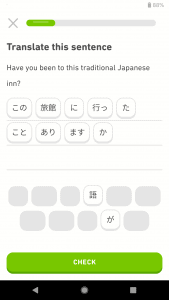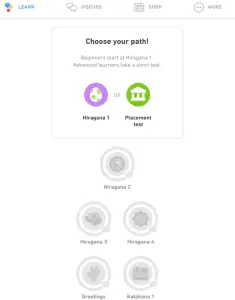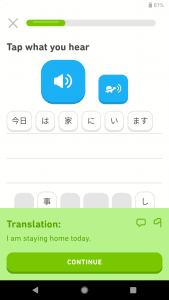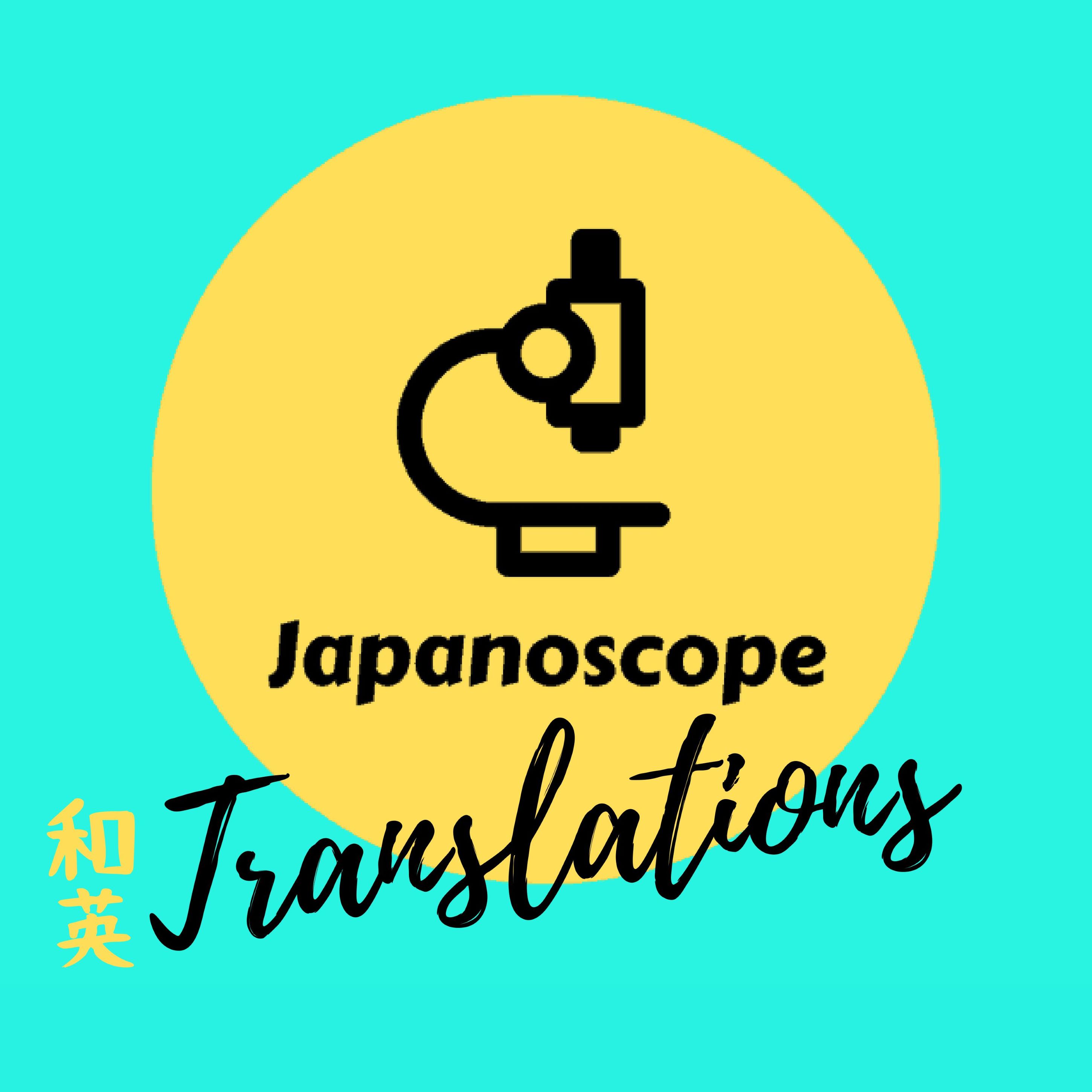Average Score 3.6
3.62/5
Verdict
- Duolingo Japanese is good as a fun, and motivating, toy for giving you the basics. But its not the most efficient way to learn a Japanese. And it’s not an all-in-one solution. You will also need other tools to get proficient at Japanese.
Overall Thoughts
- Language learning takes a long time. The quickest way to learn Japanese is by listening and speaking. You can listen and speak while doing other things, eg. while walking, driving or taking transport. Duolingo can only be done when you are concentrating on it alone, meaning the time you can devote to it is instantly limited. For this reason, using duolingo as your main way of learning a language is not the most efficient way to do it.
- On the positive side, Duolingo still provides a lot of learning value at the unbeatable price of zero dollars. That’s a big plus. And unlike most platforms, the entire core feature set is free. The paid version just gives you a couple of time saving features by removing ads and allowing you to take tests to jump ahead in the content. Paid also let’s you download lessons, but that doesn’t seem like such an issue considering the availability of mobile networks and data these days.
Learning Efficiency
2.5/5
Price
4.5/5
Ease of Use
4.5/5
Amount of content
3/5
Other platforms you should consider:
- Pimsleur Method – Most highly recommended for a systematic, listening and speaking focused program backed by a scientific approach

- Rocketlanguages – For a systematic, wholistic course for begginner to intermediate students.
Other platforms you should consider:
- Japanese Pod 101 – for a continually updating, dynamic podcast approach to learning with masses of content (Japanoscope Review Here).

- Memrise – for a duolingo style app built around videos of real native speakers
Any of the above can work well either instead of used together with Duolingo for Japanese.
Other platforms we think you should consider:
- Japanese Pod 101 – for greater amount of content, listening and speaking practice
- Rocketlanguages – For a systematic, wholistic course
- Pimsleur – for a focus on listening and speaking backed by a scientific approach
- Memrise – for a duolingo style app built around videos of real native speakers
Any of the above can work well either instead of used together with Duolingo for Japanese.
How Does Duolingo Japanese Work?
- Duolingo works by getting you translate to short fragments of language, mostly by arraning tiles on screen. It is designed as a tactile, mobile app experience. Even if you use it on a PC, it looks and feels like a big mobile screen.
- The app gives you lesson based around different themes such as “Hobbies” or “Food” or “Restaurant”.
- For Japanese it starts you about with learning the two basic non-Chinese Character scripts – Katakana and Hiragana
- Duolingo works by getting you to translate short fragments of language, mostly by arraning tiles on a screen. It is designed as a tactile, mobile app experience. Even if you use it on a PC, it looks and feels like a big mobile screen.

- The app gives you lesson based around different themes such as “Hobbies” or “Food” or “Restaurant”.
- For Japanese it starts you about with learning the two basic non-Chinese Character scripts – Katakana and Hiragana

Things we like about Duolingo for Japanese
- Gamification. Duolingo does a great job of rewarding you with badges, putting you into leaderboards and rewarding you with cute little animations along the way. I found connecting up with friends and family through the app was great for motivation – everyone can see how many experience points everyone else has gotten up to.

- Huge community of users, means that you can easily benchmark yourself against other people on leaderboards, read other people’s comments and get help.
- Lots of content with sound recordings. Mostly these sound pretty good, but sometimes they can sound a bit “computer-generated”, like the words have been cut up and put back together artificially.
- Introduces Katakana and Hiragana early, so you are learning in Japanese script from the start
- Helpful for practicing Japanese particles.
- Slick design. Duolingo is clean and cute. It’s a fun “space” to learn in.
- Offers plenty of repition, which adepts itself to how you are going with your learning.
- We found Duolingo helpful for working on particles such as は and をbecause it gives you instant feedback.
- Gamification. Duolingo does a great job of rewarding you with badges, putting you into leaderboards and rewarding you with cute little animations along the way. I found connecting up with friends and family through the app was great for motivation – everyone can see how many experience points everyone else has gotten up to.
Things we don’t like about Duolingo for Japanese
- Duolingo tends to be fairly “passive” in that you are usually choosing words from a predetermined list, rearranging existing tiles. You tend to learn in a fairly superficial way. This means words you think you “know” tend not to come to you in real life situations when you actually need them.
- Not much focus on speaking or getting you to repeat back what you have learned. Language tends to stick a lot more when you actually produce it yourself. Your brain is forced to create language. This is what happens in real life. Duolingo doesn’t really help much with this.
- You can’t use Duolingo while you are doing other things, which limits the time you can devote to using it.
- Duolingo doesn’t give you much in the way of Mnemonics to help you remember anything. When I learnt Hiragana and Katakana back in the day, my teacher created pictures out of the letters to help us remember them easily. Duolingo just throws the letters at you over and over to get you to learn by rote repetition.
- Doesn’t give you a structured review of everything you have learned. Everything is structured around themes, which is fine, but there is no easy way to do just general revision of everything across themes. There are no quizes in the free version to test yourself either.

- Recordings don’t always sound natural, and can sound “cut up”. Often, it’s as if the words and phrases have been put together, surprise surpirse, by a computer. Vocabulary in spoken speech in any language changes slightly in relation to other words around it, so duolingo doesn’t always sound like a real person.
- Doesn’t do a great job of placing you according to your current language level – I found the content it Duolingo tried to feed me was far below where I was at, and the app didn’t offer me a way to jump ahead, even in the paid version.
- Lessons are slightly too long. I often use duolingo on the train. I often find that I reach the end of a lesson with, say, a couple of stops to until my destination. I start a new lesson and get about half way through before having to put my phone away. Invariably, when I come back to the app, it has forgotten my progress and I need to start again. I find I have less problems with similar apps, such as Memrise, which have shorter lessons that you can complete in very bite-sized chunks.
Summary
Duolingo is a great tool to have in your suite of language learning kit. But it can really only get you so far.
If you really want to get serious about your Japanese learning you will want to take a look at some of these options:
- Japanese Pod 101 – for greater amount of content, listening and speaking practice
- Rocketlanguages – For a systematic, wholistic course
- Pimsleur – for a focus on listening and speaking backed by a scientific approach
- Memrise – for a duolingo style app built around videos of real native speakers
Japanoscope is a member of affiliate programs for some of the products it recommends. Japanoscope receives a commission when these products are purchased from a referral from this site.
Language Learning Program Reviews

About the reviewer
I’m Peter Head. I have succesfully completed the highest level of the Japanese Language Proficiency Test (N1). I lived in Japan for four years as a student and on working holiday. I have toured the country six times playing music and singing songs in Japanese and English.



